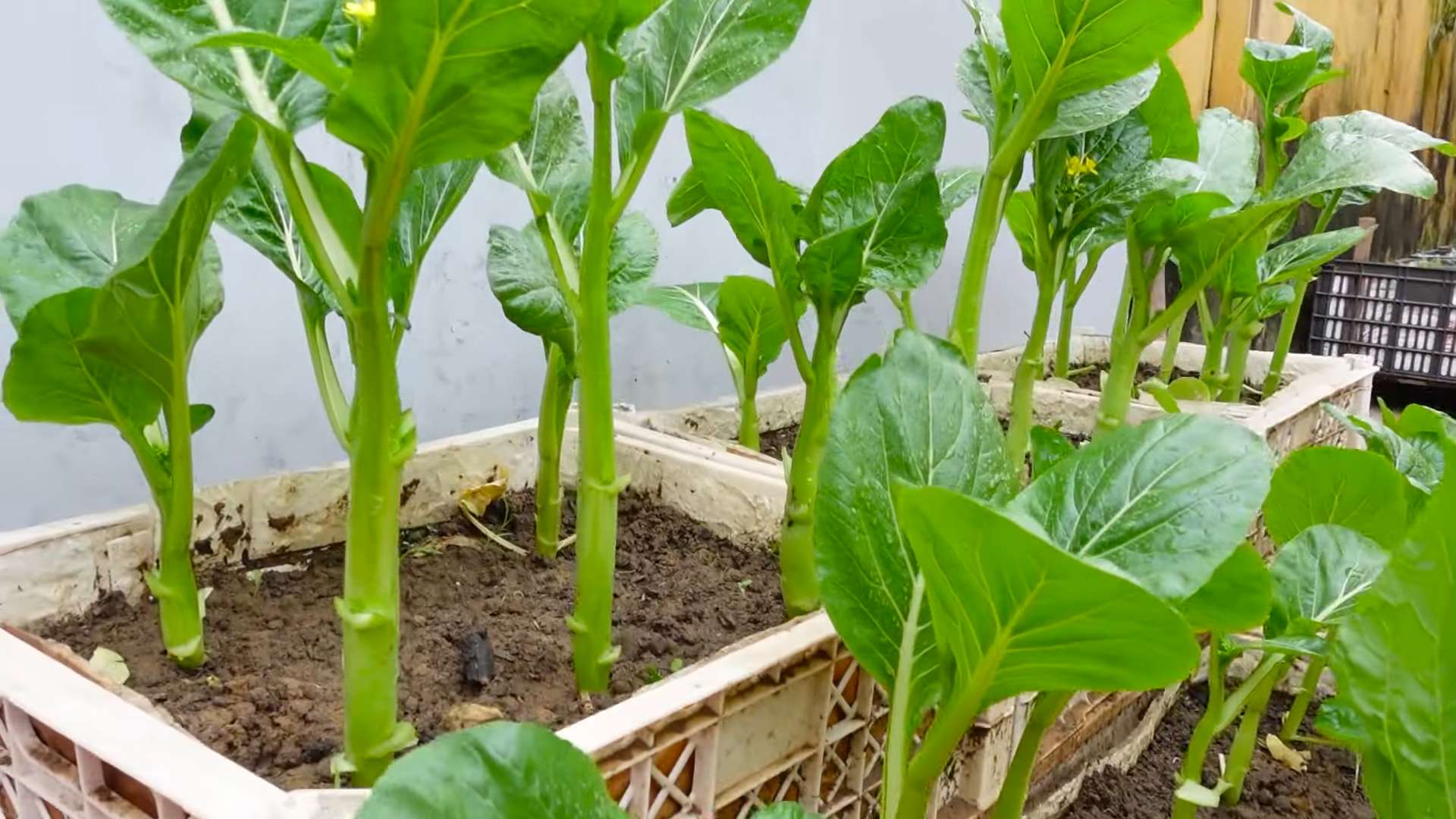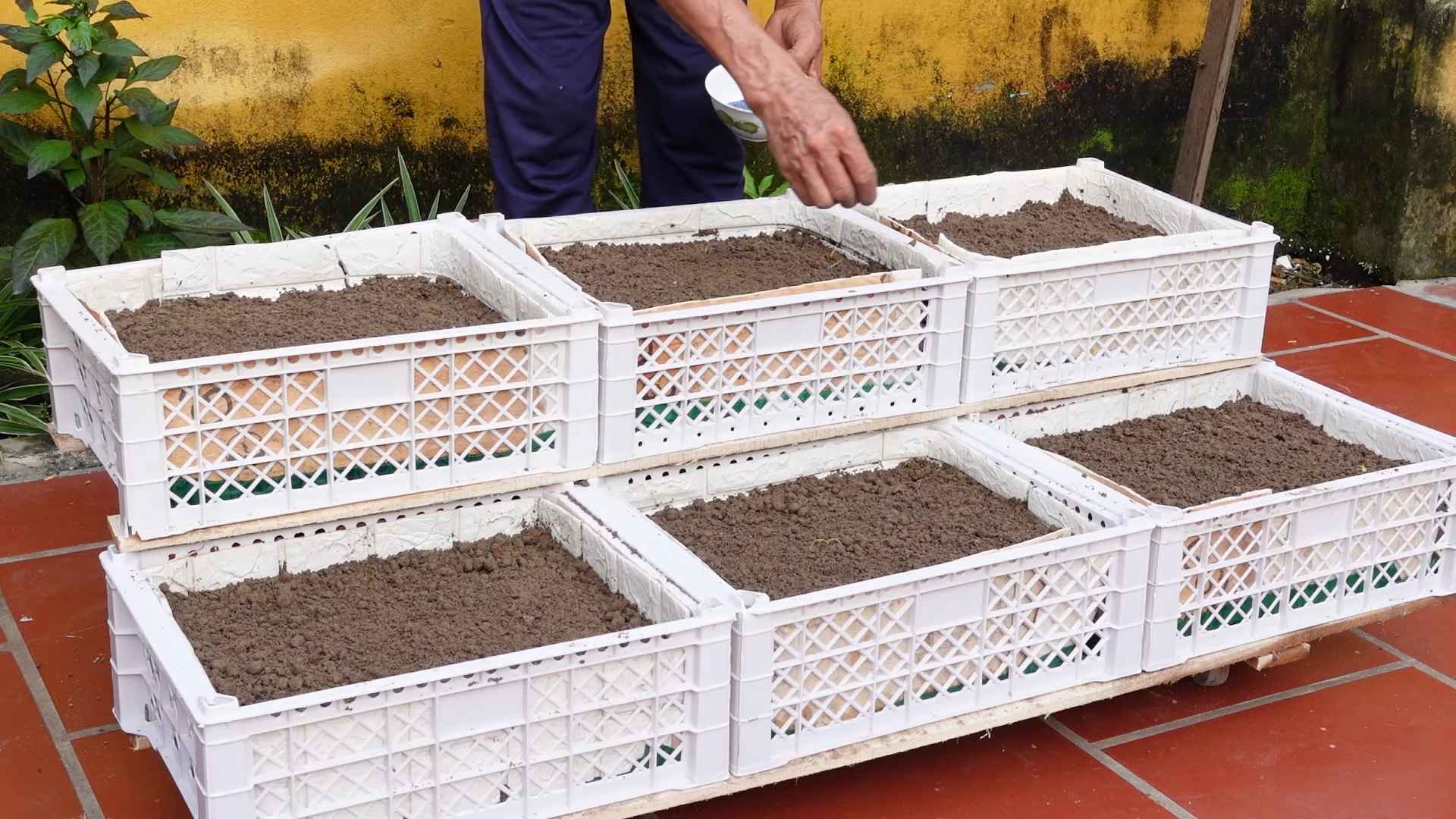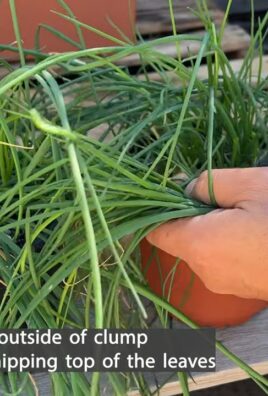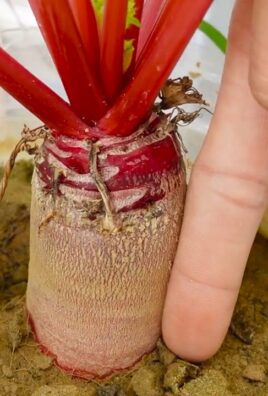Small space vegetable garden dreams can absolutely come true, even if you only have a tiny balcony, a sunny patio, or a neglected corner of your yard! Are you yearning for the taste of fresh, homegrown tomatoes, crisp lettuce, and fragrant herbs, but feel limited by your lack of space? You’re not alone! For centuries, people have found creative ways to cultivate food in limited areas, from the hanging gardens of Babylon to the intricate balcony gardens of modern-day urban dwellers.
I’m here to tell you that you don’t need acres of land to enjoy the satisfaction of growing your own food. This DIY guide is packed with clever tricks and hacks to help you maximize your yield and create a thriving small space vegetable garden. Imagine stepping outside your door and harvesting fresh ingredients for your next meal – it’s easier than you think!
In today’s world, where access to fresh, healthy produce can be challenging and expensive, learning to grow your own food is more important than ever. Plus, gardening is a fantastic way to relieve stress, connect with nature, and add beauty to your surroundings. So, let’s dive in and unlock the secrets to creating a bountiful vegetable garden, no matter how small your space may be!

Creating a Thriving Small Space Vegetable Garden
Okay, so you’re itching to grow your own veggies but short on space? Don’t worry, you’re not alone! I’m going to walk you through creating a fantastic, productive vegetable garden, even if all you have is a balcony, patio, or a tiny patch of land. We’ll focus on maximizing every inch and choosing the right plants for success. Let’s get our hands dirty!
Planning Your Tiny Paradise
Before we even think about seeds, a little planning goes a long way. This is where we figure out what we want to grow and how we’re going to make it all fit.
* Assess Your Space: Really take a good look at your available area. Is it sunny? Shady? How many hours of direct sunlight does it get each day? Most vegetables need at least 6 hours of sunlight to thrive. If you’re short on sun, consider leafy greens like lettuce and spinach, which can tolerate partial shade. Measure the area so you know exactly how much space you’re working with.
* Choose Your Vegetables Wisely: Not all vegetables are created equal when it comes to space requirements. Think about compact varieties. Bush beans instead of pole beans, determinate tomatoes (bushy) instead of indeterminate (vining), and dwarf peppers are all great choices. Also, consider what you actually *like* to eat! There’s no point in growing something you won’t enjoy.
* Consider Vertical Gardening: This is a game-changer for small spaces! Think trellises for climbing plants like cucumbers and peas, hanging baskets for strawberries and herbs, and stacked planters for lettuce and herbs. Vertical gardening not only saves space but also adds visual interest to your garden.
* Plan Your Layout: Sketch out a rough plan of your garden. Where will you place your containers? Where will your trellises go? Think about the mature size of your plants and give them enough room to grow. Also, consider companion planting – certain plants benefit each other when grown together. For example, basil repels pests that attack tomatoes.
* Soil is Key: Don’t skimp on the soil! Use a high-quality potting mix specifically designed for containers. This will provide your plants with the nutrients they need to grow strong and healthy. Avoid using garden soil in containers, as it can compact and drain poorly.
Choosing Your Containers
The right containers can make or break your small space garden. Here’s what to consider:
* Size Matters: Make sure your containers are large enough for the plants you want to grow. Root vegetables like carrots and radishes need deeper containers than leafy greens. A general rule of thumb is to choose the largest container that your space can accommodate.
* Material: Containers come in a variety of materials, including plastic, terracotta, wood, and metal. Plastic is lightweight and inexpensive, but it can heat up quickly in the sun. Terracotta is porous and allows for good drainage, but it can dry out quickly. Wood is attractive and provides good insulation, but it can rot over time. Metal can also heat up quickly and may leach chemicals into the soil. Choose a material that suits your climate and your aesthetic preferences.
* Drainage: This is crucial! Make sure your containers have drainage holes to prevent waterlogging. Waterlogged soil can lead to root rot, which can kill your plants. If your containers don’t have drainage holes, you can drill them yourself.
* Consider Self-Watering Containers: These are a great option for busy gardeners. They have a reservoir of water at the bottom that the plants can draw from as needed. This helps to prevent overwatering and underwatering.
Planting Your Vegetables
Alright, let’s get those seeds and seedlings in the ground!
1. Prepare Your Containers: Fill your containers with high-quality potting mix, leaving about an inch of space at the top. Gently tap the container to settle the soil.
2. Plant Your Seeds or Seedlings: Follow the instructions on the seed packet or plant tag for spacing and depth. For seedlings, gently remove them from their nursery pots and loosen the roots before planting.
3. Water Thoroughly: Water your plants thoroughly after planting, until water drains out of the drainage holes. This will help to settle the soil and get the roots established.
4. Mulch (Optional): Add a layer of mulch around your plants to help retain moisture, suppress weeds, and regulate soil temperature. Straw, wood chips, or shredded leaves are all good options.
5. Label Your Plants: Trust me, you’ll forget what you planted where! Use plant markers or labels to keep track of your vegetables.
Caring for Your Small Space Garden
Now that your garden is planted, it’s time to keep it thriving!
* Watering: Water your plants regularly, especially during hot, dry weather. Check the soil moisture by sticking your finger into the soil. If the top inch is dry, it’s time to water. Water deeply and thoroughly, until water drains out of the drainage holes. Avoid watering the foliage, as this can lead to fungal diseases.
* Fertilizing: Vegetables need nutrients to grow strong and produce a good harvest. Fertilize your plants regularly with a balanced fertilizer. Follow the instructions on the fertilizer label for application rates. You can use a liquid fertilizer or a slow-release granular fertilizer.
* Pest and Disease Control: Keep an eye out for pests and diseases. Inspect your plants regularly for signs of trouble, such as holes in the leaves, yellowing leaves, or powdery mildew. If you find any pests or diseases, take action immediately. You can use organic pest control methods, such as insecticidal soap or neem oil.
* Pruning and Training: Some vegetables, such as tomatoes and peppers, benefit from pruning. Pruning helps to improve air circulation and prevent diseases. Train climbing plants, such as cucumbers and peas, to grow up trellises.
* Harvesting: Harvest your vegetables when they are ripe and ready to eat. Regular harvesting encourages plants to produce more.
Specific Vegetable Tips for Small Spaces
Let’s dive into some specific tips for growing popular vegetables in limited spaces:
* Tomatoes: Choose determinate (bush) varieties for containers. Provide support with stakes or cages. Remove suckers (the shoots that grow between the main stem and the branches) to improve air circulation and fruit production.
* Peppers: Dwarf pepper varieties are ideal for containers. Provide support with stakes if needed. Pinch off the first few flowers to encourage the plant to grow larger before setting fruit.
* Cucumbers: Grow vining cucumbers on a trellis to save space. Choose parthenocarpic varieties, which don’t require pollination and produce seedless fruit.
* Lettuce and Spinach: These leafy greens can be grown in shallow containers. Harvest the outer leaves as needed, allowing the inner leaves to continue growing.
* Herbs: Herbs are perfect for small spaces. Grow them in containers or hanging baskets. Harvest them regularly to encourage bushy growth.
* Radishes: Radishes are quick and easy to grow in containers. Sow seeds directly into the soil and harvest them in just a few weeks.
* Carrots: Choose short, round carrot varieties for containers. Make sure the container is deep enough to accommodate the roots.
Maximizing Your Harvest
Here are some extra tips to help you get the most out of your small space vegetable garden:
* Succession Planting: Plant new seeds or seedlings every few weeks to ensure a continuous harvest.
* Intercropping: Plant fast-growing vegetables, such as radishes and lettuce, between slower-growing vegetables, such as tomatoes and peppers.
* Companion Planting: Plant vegetables that benefit each other together. For example, basil repels pests that attack tomatoes, and carrots repel onion flies.
* Use Reflective Surfaces: Place reflective surfaces, such as aluminum foil or white paint, near your plants to increase sunlight exposure.
* Rotate Your Crops: Rotate your crops each year to prevent soil depletion and disease buildup.
Troubleshooting Common Problems
Even the most experienced gardeners encounter problems from time to time. Here are some common problems and how to fix them:
* Yellowing Leaves: This can be caused by overwatering, underwatering, nutrient deficiencies, or pests. Check the soil moisture and fertilize your plants if needed.
* Holes in Leaves: This is usually caused by pests, such as caterpillars or slugs. Use organic pest control methods to get rid of the pests.
* Powdery Mildew: This is a fungal disease that appears as a white powder on the leaves. Improve air circulation and use a fungicide if needed.
* Blossom End Rot: This is a condition that affects tomatoes and peppers, causing the bottom of the fruit to rot. It’s usually caused by calcium deficiency. Add calcium to the soil or use a calcium-rich fertilizer.
* Lack of Fruit: This can be caused by lack of pollination, nutrient deficiencies, or stress. Make sure your plants are getting enough sunlight and

Conclusion
So, there you have it! Transforming even the tiniest outdoor area into a thriving, productive vegetable patch is not only possible, but incredibly rewarding. This DIY small space vegetable garden approach isn’t just about saving money; it’s about reconnecting with your food source, enjoying the freshest possible ingredients, and experiencing the sheer joy of nurturing life from seed to table.
Why is this a must-try? Because it empowers you to take control of your food, regardless of your living situation. Imagine stepping outside your door and harvesting ripe tomatoes for a salad, snipping fresh herbs for a pasta sauce, or picking crisp lettuce for a sandwich – all grown with your own hands. This isn’t just gardening; it’s a lifestyle upgrade.
But the beauty of this DIY project lies in its adaptability. Feel free to experiment with different container sizes and shapes to maximize your space. Vertical gardening techniques, like using trellises for climbing plants like cucumbers or beans, can dramatically increase your yield without taking up valuable ground space. Consider companion planting – pairing plants that benefit each other, such as basil and tomatoes, to deter pests and improve growth.
Don’t be afraid to get creative with your plant choices. While we’ve focused on some easy-to-grow vegetables, the possibilities are endless. Radishes, spinach, kale, peppers, and even dwarf varieties of fruit trees can thrive in containers. The key is to choose plants that are well-suited to your local climate and the amount of sunlight your space receives.
And remember, gardening is a journey, not a destination. There will be successes and failures along the way. Don’t get discouraged if a plant doesn’t thrive; learn from the experience and try again. The most important thing is to enjoy the process and celebrate the small victories.
We wholeheartedly encourage you to embark on this DIY small space vegetable garden adventure. It’s a fantastic way to enhance your well-being, reduce your environmental impact, and enjoy the delicious rewards of homegrown produce.
Once you’ve created your own miniature Eden, we’d love to hear about your experience! Share your photos, tips, and challenges in the comments below. Let’s build a community of small space gardeners and inspire others to grow their own food, no matter how limited their space may be. Your insights could be invaluable to someone just starting out. Happy gardening!
Frequently Asked Questions (FAQ)
What are the best vegetables to grow in a small space vegetable garden?
The best vegetables for small spaces are generally compact varieties that don’t require a lot of room to spread out. Some excellent choices include:
* **Leafy Greens:** Lettuce, spinach, kale, and arugula are relatively shallow-rooted and can be grown in containers or raised beds. They also offer multiple harvests.
* **Herbs:** Herbs like basil, mint, thyme, rosemary, and oregano are perfect for containers and can be easily incorporated into your cooking.
* **Radishes:** Radishes are quick-growing and take up very little space, making them ideal for interplanting with slower-growing crops.
* **Bush Beans:** Bush beans are more compact than pole beans and produce a good yield in a small area.
* **Peppers:** Peppers, especially smaller varieties like bell peppers or chili peppers, thrive in containers.
* **Tomatoes (Determinate Varieties):** Choose determinate tomato varieties, which grow to a specific size and produce all their fruit at once, rather than indeterminate varieties that continue to grow and produce fruit throughout the season.
* **Strawberries:** Strawberries can be grown in hanging baskets or containers, adding a touch of sweetness to your garden.
* **Carrots (Short Varieties):** Look for short or round carrot varieties that are suitable for container gardening.
* **Scallions:** Scallions are easy to grow and can be harvested continuously.
How much sunlight does my small space vegetable garden need?
Most vegetables require at least 6-8 hours of direct sunlight per day to thrive. However, some leafy greens and herbs can tolerate partial shade (4-6 hours of sunlight). Observe your space throughout the day to determine how much sunlight it receives and choose plants accordingly. If your space doesn’t get enough sunlight, consider using grow lights to supplement natural light.
What type of soil should I use for my small space vegetable garden?
Use a high-quality potting mix specifically formulated for containers. Avoid using garden soil, as it can become compacted in containers and doesn’t drain well. A good potting mix will provide adequate drainage, aeration, and nutrients for your plants. You can also amend your potting mix with compost or other organic matter to improve its fertility.
How often should I water my small space vegetable garden?
Watering frequency depends on several factors, including the type of plants, the size of the containers, the weather, and the type of soil. Generally, you should water your plants when the top inch of soil feels dry to the touch. Water deeply until water drains out of the bottom of the container. Avoid overwatering, as this can lead to root rot. During hot, dry weather, you may need to water your plants more frequently.
How do I fertilize my small space vegetable garden?
Vegetables need regular fertilization to produce a good yield. You can use a balanced liquid fertilizer or a slow-release granular fertilizer. Follow the instructions on the fertilizer package for application rates. Fertilize your plants every 2-4 weeks, or as needed. You can also amend your soil with compost or other organic matter to provide a slow-release source of nutrients.
How do I protect my small space vegetable garden from pests and diseases?
There are several things you can do to protect your small space vegetable garden from pests and diseases:
* **Choose disease-resistant varieties:** Select plant varieties that are known to be resistant to common diseases in your area.
* **Practice good sanitation:** Remove any dead or diseased leaves or stems from your plants. Keep your garden area clean and free of debris.
* **Water properly:** Avoid overwatering, as this can create conditions that are favorable for disease.
* **Use organic pest control methods:** If you have pests, try using organic pest control methods, such as insecticidal soap, neem oil, or diatomaceous earth.
* **Attract beneficial insects:** Plant flowers that attract beneficial insects, such as ladybugs and lacewings, which prey on pests.
* **Rotate your crops:** Avoid planting the same type of vegetable in the same spot year after year, as this can lead to a buildup of pests and diseases in the soil.
Can I grow vegetables indoors if I don’t have any outdoor space?
Yes, you can grow vegetables indoors using grow lights. Choose compact varieties that are well-suited for indoor growing. Provide adequate light, water, and nutrients, and you can enjoy fresh, homegrown vegetables year-round. Leafy greens, herbs, and peppers are particularly well-suited for indoor growing.
What if I live in an apartment with a balcony?
A balcony is a fantastic space for a small space vegetable garden! Consider the weight capacity of your balcony before adding heavy containers. Use lightweight potting mix and choose plants that are well-suited to the amount of sunlight your balcony receives. Vertical gardening techniques, such as using trellises or hanging baskets, can help you maximize your space.
How do I deal with limited space on my patio?
Limited patio space requires strategic planning. Utilize vertical gardening techniques like wall planters, stacked planters, or hanging baskets. Choose compact plant varieties and consider interplanting fast-growing crops with slower-growing ones to maximize your yield. Prioritize the vegetables you enjoy eating the most.
What are some common mistakes to avoid in a small space vegetable garden?
Some common mistakes to avoid include:
* **Overcrowding:** Don’t plant too many plants in a small space. Give your plants enough room to grow and thrive.
* **Using the wrong soil:** Use a high-quality potting mix specifically formulated for containers.
* **Overwatering or underwatering:** Water your plants properly, based on their needs and the weather conditions.
* **Not fertilizing:** Fertilize your plants regularly to provide them with the nutrients they need.
* **Ignoring pests and diseases:** Monitor your plants regularly for pests and diseases and take action promptly if you see any problems.
* **Not providing enough sunlight:** Ensure your plants receive at least 6-8 hours of direct sunlight per day.




Leave a Comment